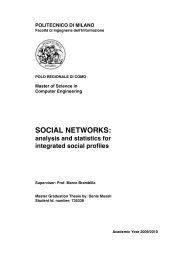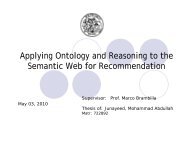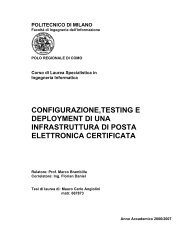Thesis full text (PDF) - Politecnico di Milano
Thesis full text (PDF) - Politecnico di Milano
Thesis full text (PDF) - Politecnico di Milano
You also want an ePaper? Increase the reach of your titles
YUMPU automatically turns print PDFs into web optimized ePapers that Google loves.
Figure 4.2: Example of WebML hyper<strong>text</strong> specification<br />
4.2 Runtime Architecture of the Framework<br />
We have implemented the execution of the existing framework in the con<strong>text</strong> of the WebRatio<br />
runtime architecture, extended to include interactions with the knowledge base. Figure 4.3<br />
depicts the new architecture, where white boxes show the WebRatio existing components, blue<br />
components are provided by the reasoner, and the yellow ones represent the runtime elements of<br />
the framework.<br />
The resulting architecture still follows the MVC2 architectural pattern, and comprises: (i) the<br />
Web-based interfaces delivering the knowledge exploration and management functionalities, (ii)<br />
the framework logic implementing these functionalities, (iii) the user interactions with the<br />
framework, and (iv) the business logic provi<strong>di</strong>ng access to the knowledge base and the XMI files<br />
of UML models. This <strong>di</strong>fferentiates from the tra<strong>di</strong>tional MVC2 architecture because of (i) the<br />
knowledge layer incorporating the knowledge base managed by the Pellet reasoning engine; and<br />
(ii) the data layer containing only XMI files serializing the UML data models used by the<br />
framework.<br />
Notice that the framework logic is decoupled from the knowledge access and the data access by<br />
introducing business logic services that are responsible to interact with Pellet and with the UML<br />
69


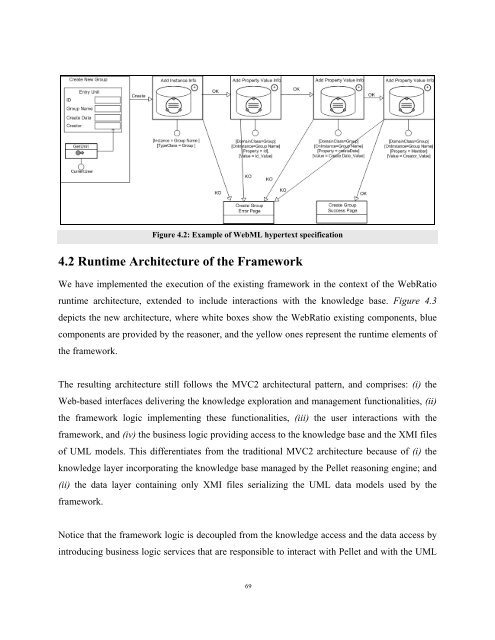
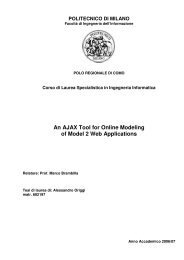
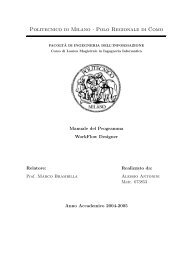
![Full text preview of the chapter [PDF] - Politecnico di Milano](https://img.yumpu.com/44021924/1/180x260/full-text-preview-of-the-chapter-pdf-politecnico-di-milano.jpg?quality=85)
